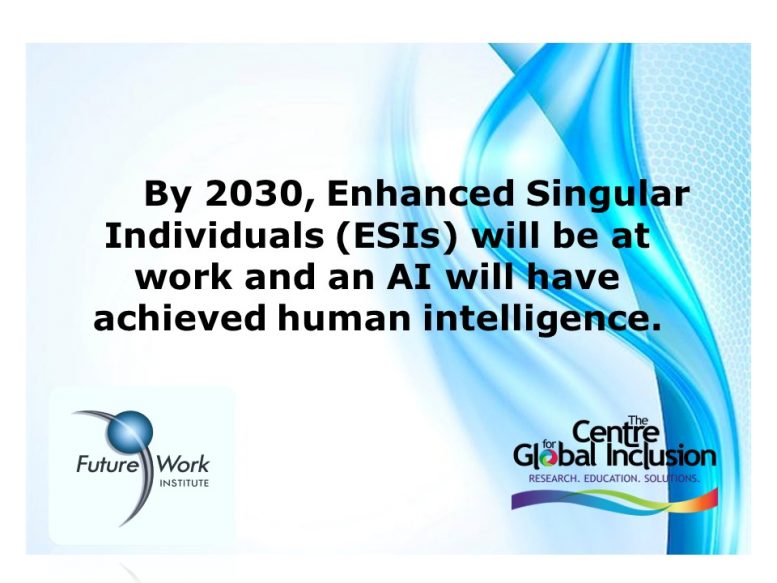Recently, we looked at the trends related to the “Singularity” and we start this week exploring the implications of ESIs (Enhanced Singular Individuals) joining our workforce. The Singularity presents both an existential threat to humanity and an existential opportunity for humanity to transcend its limitations. To see a visual infographic of the Dawn of the Singularity, go to the Futurism website to see the predictions made by Ray Kurzweil in his book, The Singularity is Near. Kurzweil, now the Director of Engineering at Google, has made 147 predictions since the 1990s and has maintained an 86% accuracy rate. Take the visual journey from 2019 to 2099 here:
https://futurism.com/images/the-dawn-of-the-singularity/
Futurist Magazine, published by the World Future Society, published a cover story entitled, Managing the Enhanced Workforce of the Future. It focused on the introduction of Enhanced Singular Individuals into the workforce of the future and raised many questions for DEI practitioners, such as:
- What will diversity (race, gender, etc.) mean if some people are enhanced and others are not?
- Will we see new forms of discrimination arise against the “Norms” (non-enhanced) as more ESIs move up quickly in the organization, displacing the Norms?
- Will the Norms form their own affinity groups or Employee Resource Groups as they feel “less than” the ESIs?
- As DEI professionals, will we have the skills to make sure both ESIs and Norms feel valued and included?
Following this article, Barton Kunstler wrote another article for the Futurist entitled, The Singularity’s Impact on Business Leaders: A Scenario: How Will Technologically Enhance Individuals Collaborate with “Normal” Employees? Kunstler explains that a “critical social function that will be affected by the Singularity is leadership, a chief defining factor of a society’s values, relations, and objectives. Leaders will bear much of the burden of social evolution when the “Enhanced Singular Individuals” (ESIs) of the Singularity Era enter the general population of “Norms” (those without technological enhancements). The leaders of every organization and group will be compelled to come to terms with the ESIs’ advanced capabilities and the tensions, ambitions, and alliances attendant upon them.” You can read an excerpt from his article here:
As a DEI, DEIA or IDEA practitioner in the future, will you be ready to broaden your definitions, your mindset and your skillset?


